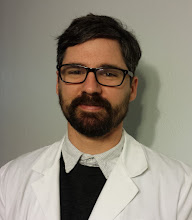
There is no such thing as Time Management. There is only Self Management, time goes on as it will, no matter your intentions for it.
So what can happen over time? Time is one of these factors that is hard to account for, but does a lot of the treating of a patient for you. (see: It's not ALL about you). The biology of tissue healing occurs over a timeline and it occurs at a pace that is affected, but not determined, by us or your patient. Over time we can see Maturation (internal changes that would take place over time) and Natural History (external events that would take place over time) change our patients.
Here are three stories of the types of things that can happen... because of time:
The Seed. I am speaking with a dear friend and he says "You know what? Something you said to me two years ago has really stuck with me." "What's that?" I ask. "I remember you telling me that when my back hurt, it wasn't because I needed to rest it more, it was because I needed to move it more." I did not recall this conversation, but he went on to say that now, after he does a lot of carrying and sitting and lifting, and his back starts to hurt he says "Damnit, I need to hit-up the gym." He says that, and he goes and works out, right away, and that takes care of it. He sees the onset of pain as a sign that he just needs to work out more. Now, this is certainly a Re-Framing, but the cool part of it all is.... the Time.
The concept was sewn in a casual conversation years prior, and came to bear fruit in a way that could only occur over time. The internalization of the concept emerged as truth in behavior, but that does not happen instantly.
The Pull. A diagnosis of hip osteoarthritis and it hurts all the time, severe, really affecting walking. Other than that, though, no significant comorbidities. I perform some passive motion, some tests at the hip, all painful. Isometric muscle testing is not going smoothly due to pain, either. This guy is really flared up. So I move to long-axis distraction with the patient in supine. No better. Dang, I need to see if I can make a change with this patient.
Ok, let's explain pain sensations: I start to explain some analogies about sensitivity, about flare ups, about how movement can play a role in improving his sensations, etc. All the while I'm still distracting his hip, relaxed, pulling on his leg like I'm a water-skier and he's the boat. About 2 minutes in to my educational metaphors he interrupts me and says "Hey! Keep doing that, this feels amazing!" "What, pulling on it?" I ask. "Yes. This is the best I've felt in 2 months!." Ok, another minute of distracting then.
The results of this maneuver carried over to sitting and standing and walking out of the clinic. Pain free. Now, Time was a lucky factor here. That long-axis distraction needed to develop, in some way. Perhaps the duration gave the patient time to relax and allow the distraction to occur, reducing the nociception. You can never tell what will happen over time.
The Show. The woman is being seen for a hip injury that occurred at work. At this point she is fixated on the original X-ray results and obsessively concerned that something is still wrong in there. At the 3 month mark, I am concerned about a "pain problem" and not just a "tissue issue." After asking if it's OK, I go into pain science concepts, tissue healing timelines, sensation and perception, the whole thing. This goes on for another month, with most of the conversations ending something like: "Do you see how that works?" and her answering "No. All I know is it hurts and it needs to be fixed."
Enter: The crazy stuff that can happen over time. One Monday morning she comes in saying she feels good. She says she has a new appreciation for the therapeutic process and feels like it will get better. What a pleasant 180, but what's the deal? Well, over the weekend there was a television show that portrayed a woman who had a hip injury (sort-of similar to my patient's, not really though) and in the television show the woman had rehab for one year. This new information had, again, re-framed her situation in new light. It had shifted her own expectations about healing Time and the recovery process. And done such a good job of it that now the movements in the clinic were less painful. Her view of time had changed.
If that event had not occurred over the course of therapy, we may have discharged due to plateau in progress. "Only time will tell," as they say.
We also see time as a negative or constraining influence in some cases, for example, trying to get full knee extension or flexion by a certain time, etc. Heck, we blame Time as the cause of some aches and pains everyday. "It's called getting old" they say.
In the fast pace of the clinic, with deadlines, outcomes, billing, productivity and patient management duties all moving rather fast, it is nice to stop and think of what that time is doing for you.
Pause and respect the healing process. It takes time, so give it time.
-Matt Dancigers, DPT
*as always, details and cases are adjusted to protect privacy
Interested in live cases where I apply this approach and integrate it with pain science, manual therapy, repeated motions, IASTM, with emphasis on patient education? Check out Modern Manual Therapy!
Keeping it Eclectic...












Post a Comment
Post a Comment